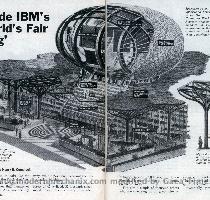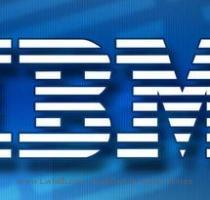Hewlett-Packard net income surges 28 pct amid mending computer market; 2010 outlook raised
By Jordan Robertson, APTuesday, May 18, 2010
HP net income surges amid mending computer market
SAN FRANCISCO — Hewlett-Packard Co.’s latest numbers show how deeply dependent the company is on personal computers even as it aggressively expands into more lucrative areas.
HP reported after the stock market closed Tuesday that its net income jumped 28 percent and revenue rose 13 percent in the February-April period, both signs that increased demand for computers is helping heal a battered technology industry.
The numbers beat Wall Street’s forecasts and HP raised its 2010 revenue and adjusted profit forecasts, sending its shares higher.
HP earned $2.2 billion, or 91 cents per share, in its fiscal second quarter, which ended April 30. It earned $1.7 billion, or 71 cents per share, in the same period last year.
Excluding special items, it earned $1.09 per share. Analysts expected $1.05 per share on that basis.
The results mark a continued growth in profit at HP, the world’s No. 1 maker of PCs and printers. Although HP had been making money even during the height of the recession, its net income had been getting smaller each quarter. But for three straight quarters now, net income has been growing.
Revenue rose to $30.8 billion, better than the $29.8 billion that analysts polled by Thomson Reuters expected. In the same quarter a year earlier, revenue was $27.4 billion.
For 2010, HP is now predicting revenue of $123.7 billion to $124.9 billion, which topped analysts’ forecasts for $123.0 billion. HP’s earlier prediction was for revenue of $121.5 billion to $122.5 billion.
The company now expects profit of $4.45 to $4.50 per share, excluding special items. Analysts were expecting $4.45 per share. HP’s previous forecast was for $4.37 to $4.44 per share.
The higher outlook excludes 69 cents per share in one-time costs, largely related to HP’s restructuring and acquisitions. When those costs are included, HP’s net income should be $3.76 to $3.81 per share, which is down from its earlier estimate.
HP has dramatically broadened the scope of its businesses in the past few years. Still, the numbers reinforce the extent to which HP leans on its core businesses for growth.
HP’s PC division was once again a heavy lifter.
It supplies about a third of HP’s overall revenue, and revenue in that division increased 21 percent in the latest quarter.
Robust consumer demand has helped buoy PC makers and their suppliers, even as they grapple with anemic corporate appetites for new PCs.
Cathie Lesjak, HP’s chief financial officer, said in an interview that HP saw an “uptick” in orders from smaller businesses and the financial services industry. But as previously predicted, Lesjak said, spending by large corporations “refreshing” their PC fleets will remain weak until the second half of this year.
“We’re not calling for a really big uptick in corporate refresh at this point in time, but we’re definitely seeing some signs there,” she said.
PCs, however, are among HP’s least-profitable products. That is a major reason why HP is pushing hard into other markets, such as technology services and computer networking, where margins are higher.
HP’s $13.9 billion acquisition of Electronic Data Systems in 2008 cranked up its rivalry with IBM Corp., a services and software powerhouse.
Services now bring in more profit than any other HP business, even edging out its longtime cash cow of selling printer ink.
Still, services aren’t growing as fast as other HP divisions. Revenue in the services division increased 2 percent over last year. Lesjak said that was in line with the overall market.
HP is also buying Palm Inc., a $1.4 billion deal that will strengthen HP’s smart-phone business, and bought 3Com Corp. in a $2.7 billion takeover that intensified HP’s rivalry with Cisco Systems Inc. in networking.
Shares in HP, which is based in Palo Alto, jumped $1.15, or 2.5 percent, to $47.94 in extended trading after the release of results Tuesday. Earlier, it closed down 73 cents, or 1.5 percent, at $46.79.
Tags: North America, San Francisco, United States

